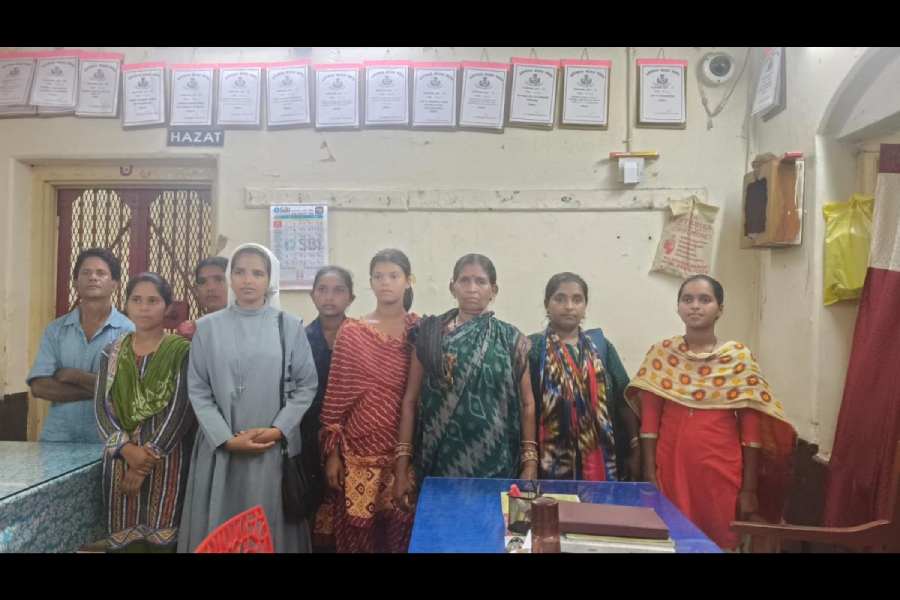
Hitopadesha is a collection of ancient Sanskrit fables in the bestiary tradition which is meant to be lessons in statecraft for young or would-be princes. It is similar to Panchatantra and many of the stories are retold in it. Each narrative meant to edify, concludes with a moral.
The great humorist and lexicographer, Rajshekhar Basu (1880-1960), who was a chemist by profession, had retold 12 of these stories in his delightfully witty style and gifted the manuscript to his great grandson, Dipankar Basu, when he was a child of six in the year 1948. He had finished writing it on February 25 the same year.
The manuscript of Hitopadesher Galpo was written in a bound exercise book with a cover of purple paper. Instead of writing his own name, Rajshekhar Basu drew a parrot with pen and ink in the middle of the title page and beneath it inscribed the title as well as his great grandson's name and residential address - 72, Bakulbagan Road, Calcutta. Under the cover is written the date on which he had started writing it - March 14, 1943, when Dipankar Basu was only a little more than a year old. The book had been published by Visva-Bharati during the writer's lifetime.
The entire book is neatly written in Rajshekhar's bold hand in black ink, and he did so without scratching out a single word. After all these years, a facsimile copy of Hitopadesher Galpo has been published by well-known collector Parimal Ray and Kazi Anirban.
Dipankar Basu had carefully preserved the book, and he wrote an introduction to this book in which he recounts how the great litterateur had gifted it to him. The child, who was aware that his " borodadu" was a renowned author, had once complained to him that he had never written anything for him. So one day Rajshekhar gave the manuscript to his great grandson, but told him that it should be published. So first it was published in the children's magazine, Mouchak.
Rajshekhar Basu's only daughter, Pratima, had taken her own life a few hours before the death of her husband, Amarnath Palit, on April 15, 1934. With a heavy heart, the grieving father had written a poem titled Sati, which came out in a paper in the memory of his daughter. Later it was published in the monthly magazine, Basudhara.
The raconteur in Hitopadesher Galpo is Bishnu Sharma who had promised to the ruler, who feared his sons had gone astray, that he would make their paths straight in six months' time. But he decided that instead of asking them to study he would tell them captivating stories for their edification. So he started recounting the familiar tales of the crow, pigeon, mouse, tortoise and deer; of the lion and the fox and of the blue jackal.
The lexicographer in Rajshekhar Basu (he had published Chalantika which won the praise of Tagore) provided footnotes explaining the Sanskrit names of all the characters in these stories.
This is indeed a collector's item but is not for sale.











